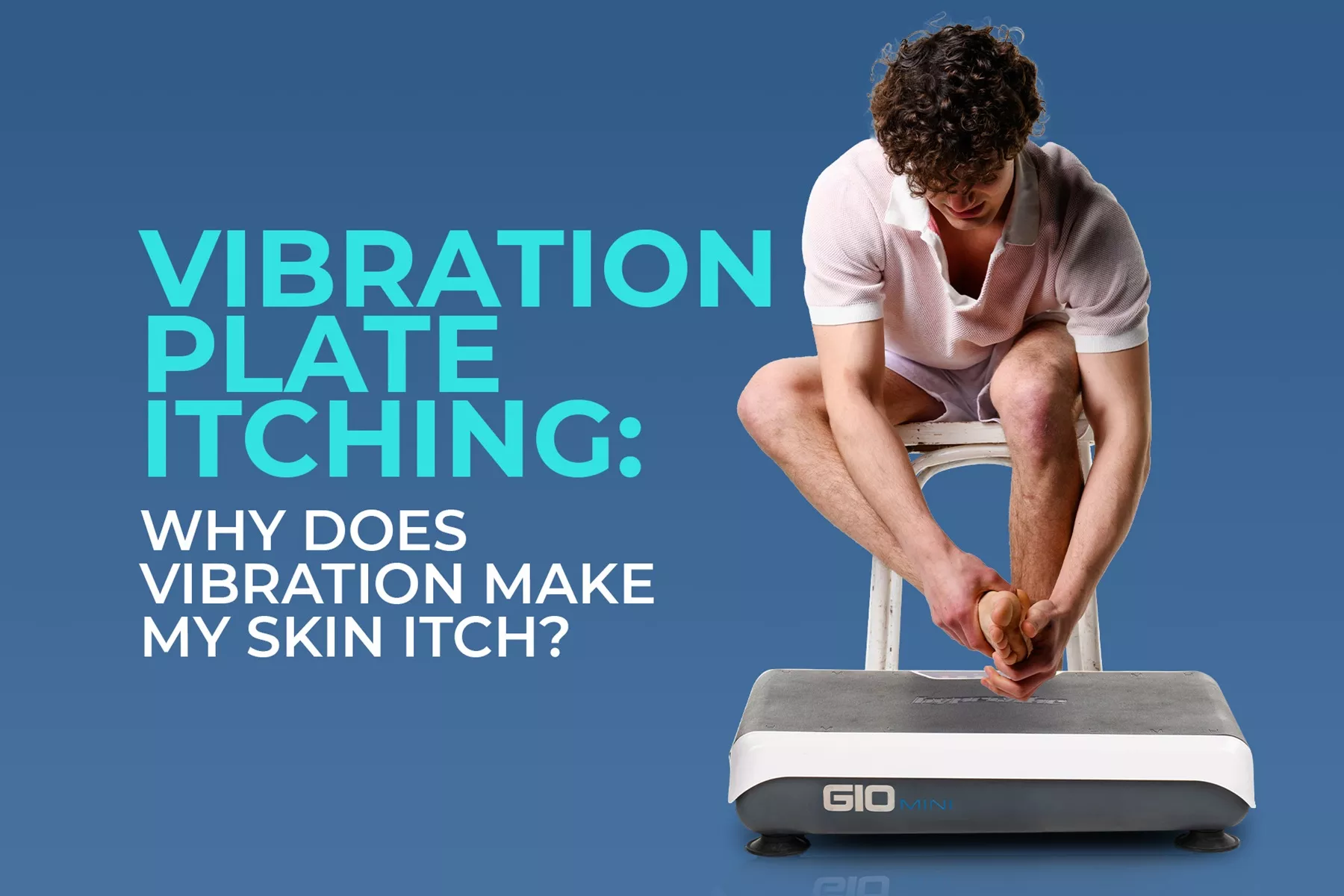
Many people, especially beginners, notice an itchy or tingling “pins-and-needles” feeling in their extremities during or after a Whole Body Vibration (WBV) session.
This short-lived itch is common and often harmless; most people adapt within a few sessions as their body adjusts to this unique form of exercise.
If you’re wondering, “Why does a Vibration Plate make me itch?” The typical answer is that vibration briefly boosts skin blood flow and stimulates the superficial nerves, which can result in itchiness or tingly sensations.
This can often be the case in distance runners (“runner’s itch) or other endurance athletes as well.
While it’s often temporary and benign, seek medical advice if itching comes with hives or welts; extreme redness and swelling (angioedema); or systemic symptoms (wheezing, dizziness, faintness), which can signal rare vibratory urticaria, angioedema, or exercise-triggered cholinergic urticaria.
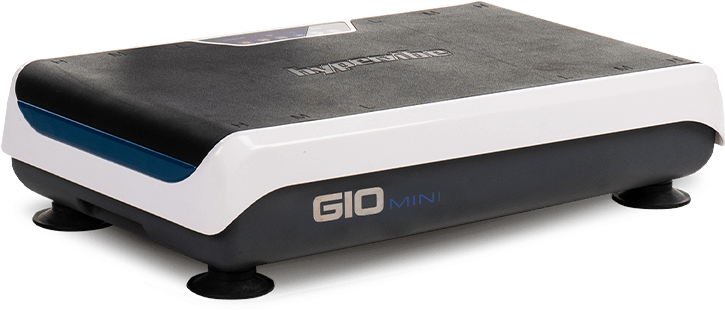




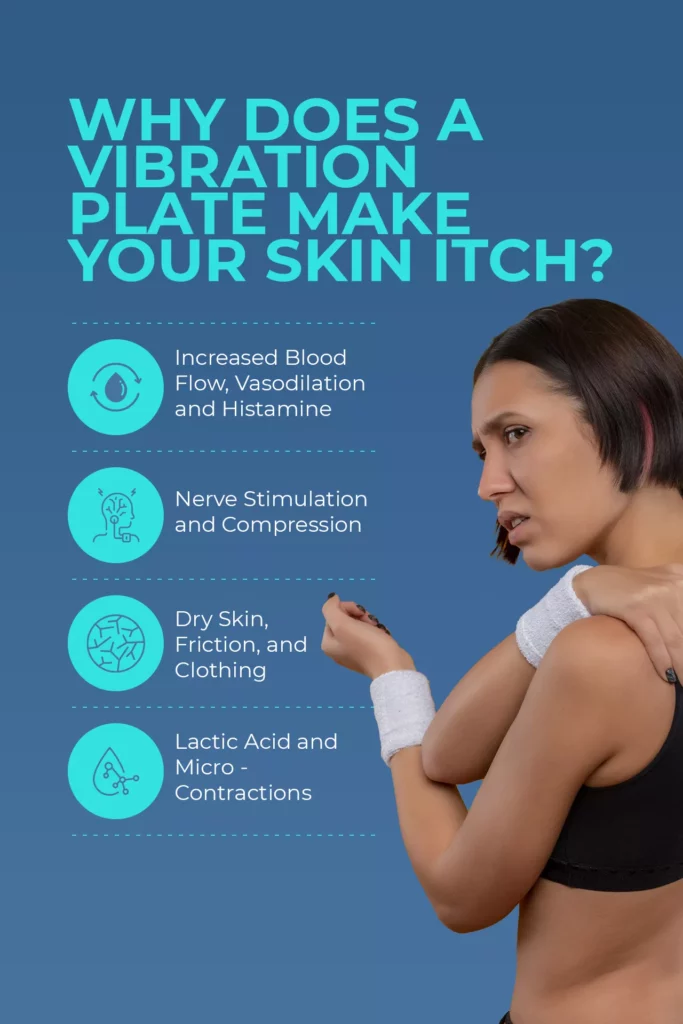
Infographic showing four reasons vibration plates can cause skin itch: blood flow, nerve stimulation, friction, and lactic acid
Whole Body Vibration (WBV) triggers rapid, reflexive muscle contractions that stimulate circulation throughout the body, sending a surge of blood toward the skin’s surface. As the blood vessels widen (partly through nitric oxide signaling), superficial sensory nerves also become more active.
This heightened activity often produces sensations of tingling, “pins and needles,” or mild itchiness.
At the same time, your body naturally releases small amounts of histamine during physical exertion.
Histamine helps regulate blood flow and delay fatigue by binding to specific receptors that lower the firing threshold of nearby nerve endings.
The result is a temporary electrical signal interpreted by the brain as an itch.
This mild itch or tingling is a normal part of the body’s adaptive response to WBV and typically subsides after a few sessions as your circulatory and nervous systems adjust to the increased stimulation.
Mechanical vibration can cause muscles to transiently compress nerves, similar to a limb “falling asleep.”
This can produce tingling or itching while using a vibration plate.
If you’re using Whole Body Vibration (WBV) for lymphatic support or you have neuropathy, increased fluid movement and altered nerve sensitivity can make these sensations more noticeable (usually improving as your body adapts).
Vibration increases micro-movement between skin and fabric.
On dry or sensitive skin, that extra friction can amplify itch.
A simple, practical fix is to apply a light moisturizer 15–30 minutes before training, choose soft, moisture-wicking layers (e.g., polyester), and avoid seams that rub against your skin.
Whole Body Vibration triggers rapid, reflexive muscle “micro-contractions.”
In beginners, those fast repeats rely more on anaerobic metabolism, which briefly increases local metabolites such as lactate.
These chemicals make your nerve fibers more sensitive, which your brain can perceive as stinging, prickling, or a light itch.
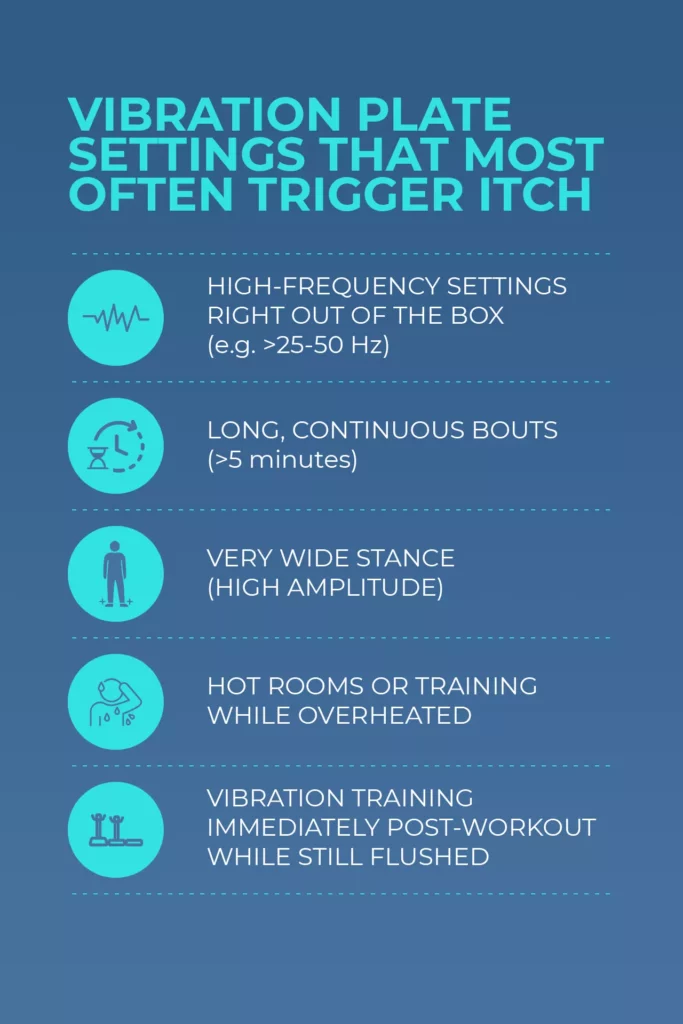
Infographic showing five vibration plate settings that can trigger skin itch, including high frequency, long sessions, wide stance, overheating, and post-workout use.
High vibration stimulates superficial nerves and ramps up skin blood flow quickly.
It takes some time to adapt.
This is most common when using vibration plate equipment at high settings on day one.
Extended sets let heat and metabolites accumulate around nerve endings, increasing that prickly/itchy feel.
A wider foot position increases vertical displacement, intensifying nerve and skin stimulation.
Warm environments and elevated body temperature enhance vasodilation and skin sensitivity.
After cardio or strength training, circulation and histamine levels are already elevated.
If you use Whole Body Vibration (WBV) for cooldown, keep frequencies and durations low until your body temperature normalizes.
If you’re searching for how to stop itching from vibration, these simple tips often help.
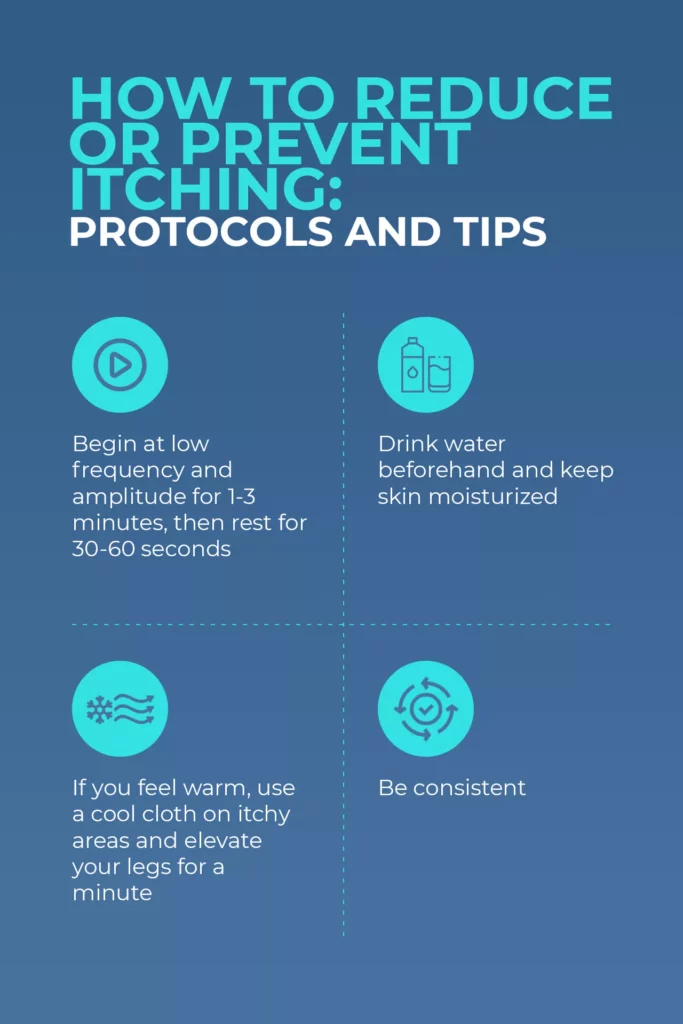
Infographic with five tips to reduce itching from vibration plate use, including low frequency use, hydration, proper clothing, cooling techniques, and consistency.
Begin at low frequency and amplitude for 1–3 minutes, then rest for 30–60 seconds.
Add time and vibration plate settings gradually as your body adapts.
Short bouts limit heat, metabolite buildup, and nerve overstimulation, which are the main drivers of that itchy feel.
Drink water beforehand and keep skin moisturized (apply light lotion 15–30 minutes before).
Well-hydrated, moisturized skin is less reactive to friction and temperature changes that can magnify itch.
Wear snug, moisture-wicking layers to reduce micro-friction.
Keep feet closer together (hip width); widen only after the itching response eases.
Heat and post-exercise histamine and vasodilation can amplify itching.
Let your temperature normalize before WBV, or keep settings conservative during cooldowns.
Between sets, step off the vibration plate for a break.
If you feel warm, use a cool cloth on itchy areas and elevate your legs for a minute.
Cooling lowers vasodilation and skin–nerve sensitivity that can trigger itch.
Like “runner’s itch,” WBV-related itch is usually short-lived and improves with regular exposure as circulation and nerve responses normalize.
Most users adapt over a few sessions.
This may vary depending on the individual, fitness level, and any health conditions.
Do 2–3 sets of 30–45 seconds at a moderate frequency with a hip-width stance, resting 30–60 seconds between sets.
Increase only when sessions feel comfortable without persistent itch.
|
Normal Symptoms |
Red Flags |
|
Mild itch or tingle without visible rash |
Itch with rash or hives that appear within minutes of Vibration Training |
|
Fades during rest, improves with each session |
Swollen lips, face or eyelids (angioedema) |
|
Redness or warmth that cools quickly |
Dizziness, chest tightness, wheezing or trouble breathing |
|
Triggered by high settings or long sessions and eased when these are lowered. |
Itch that gets worse session-to-session despite low settings |
Most users simply adapt as circulation and nerve sensitivity normalize.
If you hit any red flags above, stop WBV and contact a clinician to rule out uncommon conditions such as vibratory urticaria.
Sometimes the red flags are symptoms of a rare, often inherited condition where vibration triggers hives, swelling, and systemic symptoms (flushing, headache, metallic taste) within minutes.
It is linked to variants in the ADGRE2 gene and mast cell histamine release.
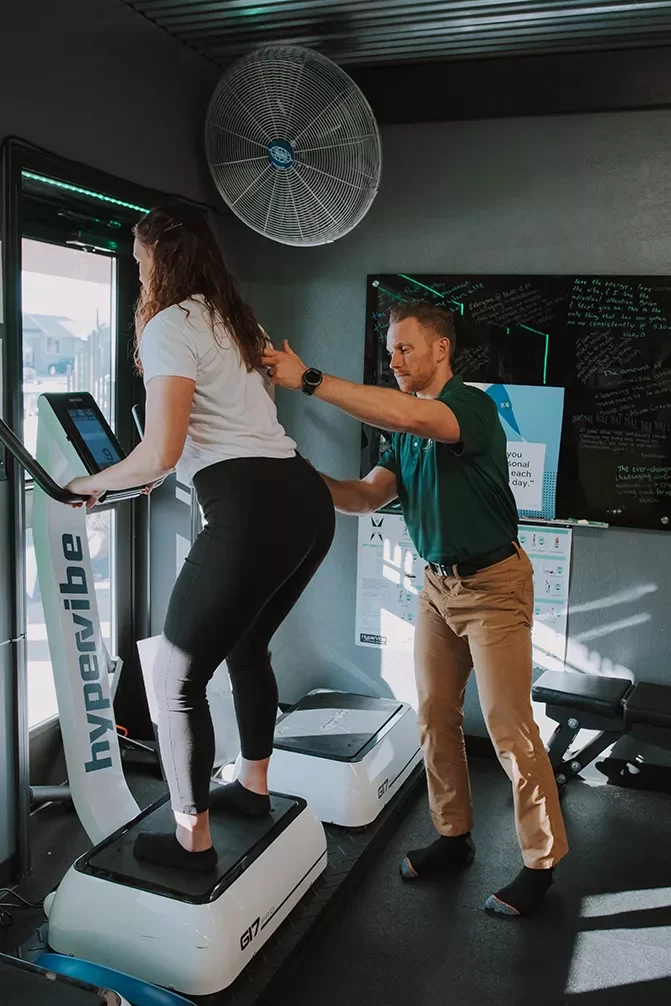
woman standing on a hypervibe platform
What to Look For
What to Do
Here are some contraindicated conditions that require medical consultation before attempting Vibration Training:
If any of these sound familiar, check in with your doctor before using a Vibration Platform.
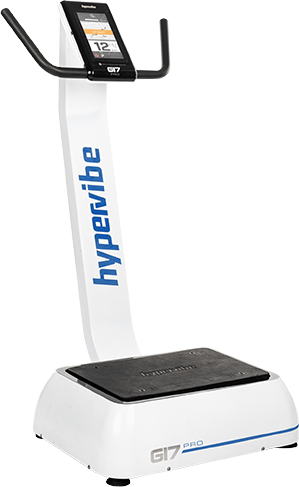




These customized programs are general, beginner-friendly defaults.
The goal is to reduce itchiness and “pins & needles” while your body adapts.
Here is a simple 4-week workout plan.
|
Week |
No. of sets |
Time per set |
Frequency |
Stance |
Rest between sets |
|
1 |
2-3 |
30-45 s |
Low (5-15 Hz) |
Hip-width |
30-60 s |
|
2 |
3-4 |
45-60 s |
Low (5-15 Hz) |
Hip-width |
30-60 s |
|
3 |
3-4 |
60-75 s |
Slight increase up to 20 Hz (only if itch stays mild/transient) |
Hip-width |
45-75 s |
|
4 |
4-5 |
60-90 s |
Maintain or cautiously raise (as tolerated) |
Widen stance cautiously if comfortable |
60-90s |
The aim is to encourage lymph fluid movement and skin perfusion with minimal sensory overload.
Whole Body Vibration (WBV) is shown to raise skin blood flow and is associated with nitric oxide (NO) increases, both relevant to lymphatic system support.
Whole Body Vibration (WBV) can improve lower-limb blood flow or temperature, and some studies note benefits in diabetic neuropathy, but nerve sensitivity varies widely. Start very slow and monitor progress closely.
Program:

The short answer is no.
Vibration plates have been around for quite some time now, improving human health in more or less every possible aspect.
Since their mass introduction to the US fitness market, they have been the subject of numerous scientific studies with plenty of promising results.
According to science, the vibration plate is considered a safe type of exercise device that is not associated with unpleasant side effects.
Having said that, it is worth mentioning that as with any other type of fitness equipment, the vibrating machine carries a certain level of risk, if not used accordingly.
In other words, if you overdo with whole body vibration or use the device against the manufacturer’s safety precautions, you risk hurting yourself.
For best results:
Furthermore, certain groups of the population should stay away from the vibrating platform at all times.
Those of you who have severe heart conditions, suffer from epilepsy, have lately had metal pins fitted, are recovering from a recent operation, have recently had a head injury, or are pregnant, should not attempt to use the vibration plate.
If in doubt, please speak with your medical provider.
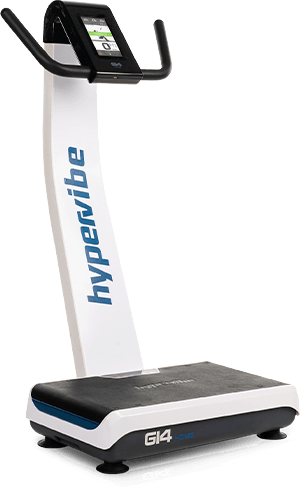




Likely causes include
It’s common for beginners to wonder why a vibration plate makes them itch in early sessions.
Most people adapt within a few workouts.
Itching is more likely when you start at high frequencies (around 30–35 Hz or above) when your body hasn’t adapted, run long continuous bouts (over 60–90 seconds), or use a very wide stance that effectively raises amplitude.
Training while overheated, in a hot room, or immediately after a hard workout also heightens vasodilation and skin sensitivity.
Even rough fabrics or dry skin can add micro-friction that causes itching.
Train in a cool room, keep vibration settings low, and avoid very long continuous bouts at first.
Hypervibe’s beginner guides emphasize starting low and progressing gradually.
This is ideal when skin feels prickly.
Whole Body Vibration (WBV) can raise skin perfusion and support fluid movement, which is useful for swelling, but that same uptick in circulation and mild histamine can produce a transient tingle/itch.
Keep frequency low, try seated positions, and cool down with easy walking and leg elevation.
Begin seated to limit whole-body load while you assess sensations, then progress to supported standing as comfort improves.
Yes—start with daily 6–10-minute low-frequency sessions split into 45–60 s bouts with equal rest.
Progress by adding one bout per day or increasing frequency slightly as comfort allows. (Pair with hydration and a brief cool walk.)
All four can amplify vasodilation and nerve firing.
Stop and seek medical advice if you develop hives/welts, swelling of lips/face/eyelids, wheezing, chest tightness, or dizziness, or if itching worsens every session despite lowering settings.
Ask your clinician if WBV is appropriate for you if you have cardiovascular disease, hypertension, osteoporosis, implanted devices (e.g., pacemaker), pregnancy, recent surgery, uncontrolled diabetes, active thrombosis, or other significant conditions.
If cleared, begin at the lowest settings.
Evidence suggests WBV can aid perfusion and comfort for some users, but responses vary.
Neuropathy users should follow clinician-guided, very short, low-frequency programs with close monitoring.
These are precaution/contraindication categories.
Many users train safely under medical guidance by keeping intensity conservative; device carriers (e.g., pacemakers) and those with osteoporosis should obtain explicit clearance before use.
Normal: mild, even warmth/redness that fades within minutes of rest.
Allergic-type: raised, itchy welts (hives), sometimes with angioedema or systemic symptoms shortly after vibration.
If you notice these symptoms, seek medical care and stop using the vibration plate.
Itching during Whole Body Vibration (WBV) is usually a harmless sign that circulation has increased and superficial nerves are more active.
Most people adapt quickly. However, it’s important to recognize warning signs and pause training if you develop hives or welts; swelling of the lips or face; dizziness; wheezing; or chest tightness.
To help prevent ordinary itching, start low and progress slowly, stay well hydrated, wear smooth, moisture-wicking clothing, train in a cool room, and finish with a moderate walk or stretch to cool down.
If you’re exploring equipment, Hypervibe models have low-frequency ranges. You can also book a specialist consultation for a tailored protocol and consider beginner-friendly accessories such as bolted towers and mats to reduce friction points and improve comfort.
Stay connected by joining our email list for new WBV protocols, safety insights, and troubleshooting tips.
For more guidance, visit our FAQ pages and buyer guide for condition-specific resources.
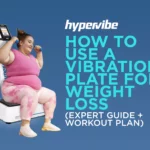
Here’s how we use a vibration plate for weight loss...
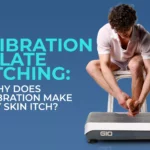
Many people, especially beginners, notice an itchy or tingling “pins-and-needles”...
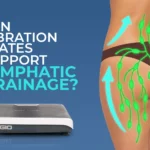
Yes, Vibration Plates or Whole Body Vibration (WBV) platforms, promote...

The lymphatic system, also called the lymphoid system, is an...

Are vibration machines bad for you? Yes, if used incorrectly....